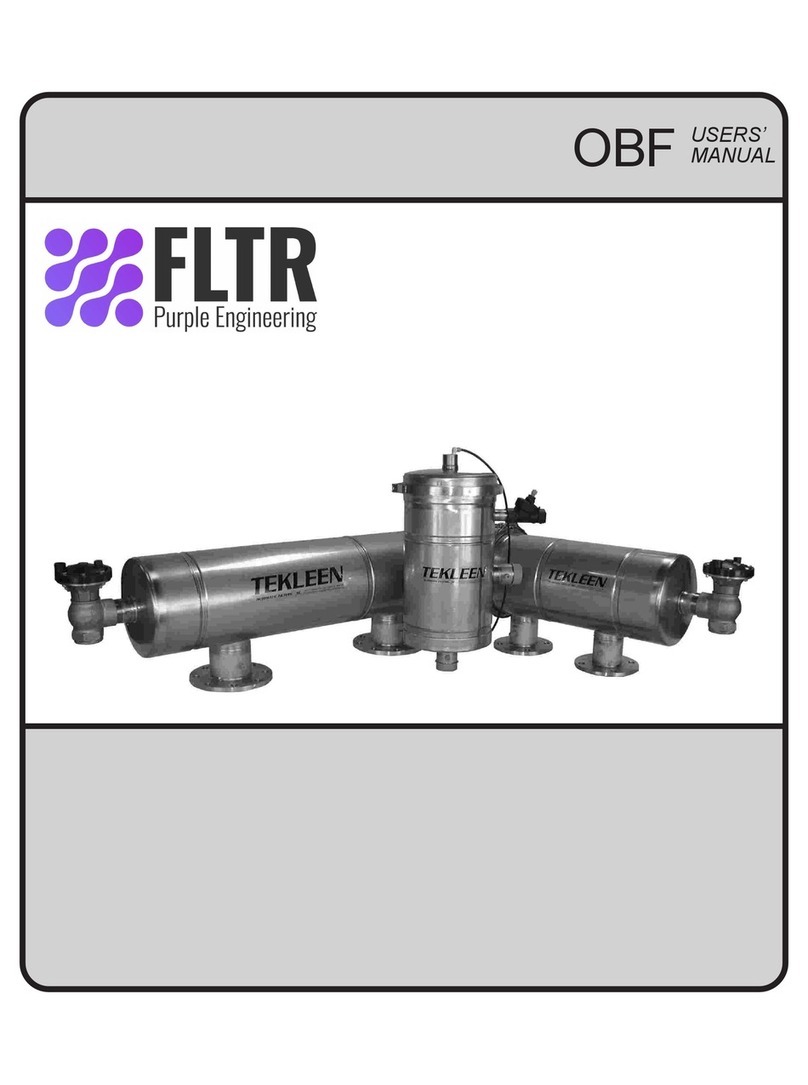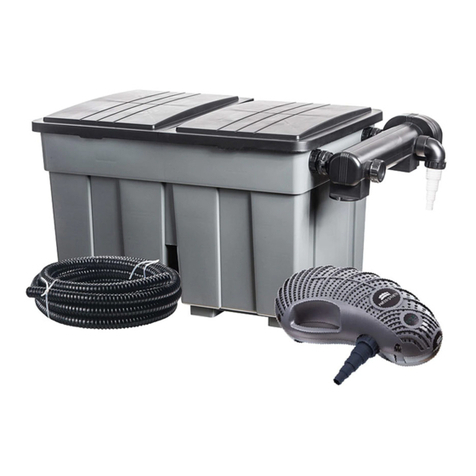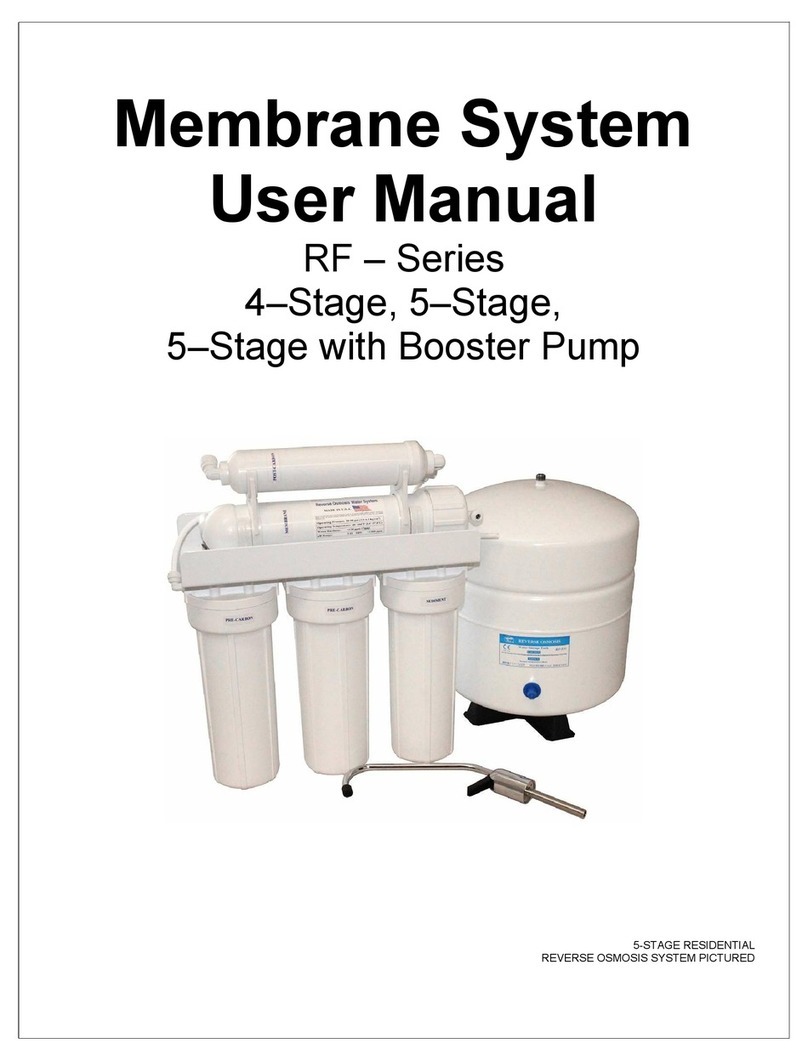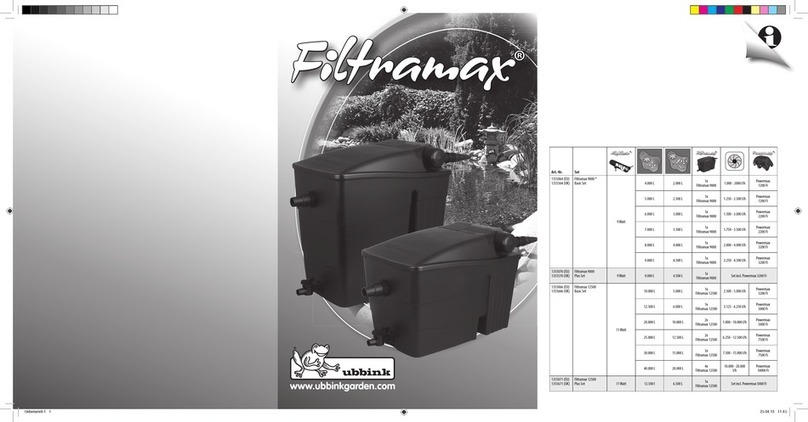2
• Chronic, recurrent pulmonary embolism where anticoagulant therapy has failed or is contraindicated
The DENALI®Filter may be removed according to the instructions supplied under section labeled: “Optional
Procedure for Filter Removal”.
D. Contraindications for Use
The DENALI®Vena Cava Filter should not be implanted in:
• Patients with an IVC diameter larger than 28mm.
• Pregnant patients when fluoroscopy may endanger the fetus. Risks and benefits should be assessed carefully.
• Patients with risk of septic embolism.
• Patients with uncontrolled sepsis
• Patients with known hypersensitivity to nickel-titanium alloys.
The DENALI®Vena Cava Filter should not be retrieved if significant thrombus is in or near the filter.
E. Warnings
1. The DENALI® Filter consists of nickel-titanium alloy, which is generally considered safe. However, in
vitro testing has demonstrated that nickel is released from this device. Persons with allergic reactions
to nickel may suffer an allergic response to this implant, especially those with a history of metal
allergies. Some patients may develop an allergy to nickel if this device is implanted. Certain allergic
reactions can be serious. While devices that release nickel are not expected to result in symptoms
such as difficulty in breathing or inflammation of the face or throat, if these types of allergic reactions
occur, patients should be instructed to seek immediate medical attention. Some forms of nickel have
also been associated with carcinogenicity (ability to cause cancer) in animal models. It is unknown
whether nickel released from implants will increase a patient’s cancer risk.
2. Do not use the device or accessories after the expiration date.
3. Contents are supplied sterile. Do not use if the product sterilization barrier or its packaging is
compromised.
4. This device has been designed for single use only. Reusing this medical device bears the risk of
cross-patient contamination as medical devices - particularly those with long and small lumina, joints,
and/or crevices between components - are difficult or impossible to clean once body fluids or tissues
with potential pyrogenic or microbial contamination have had contact with the medical device for an
indeterminable period of time. The residue of biological material can promote the contamination of the
device with pyrogens or microorganisms which may lead to infectious complications.
5. Do not deploy the filter prior to proper positioning in the IVC, as the DENALI®Vena Cava Filter cannot be
safely reloaded into the storage tube. Do not deploy the filter unless IVC has been properly measured.
Never re-deploy a removed filter.
6. Do not resterilize. After resterilization, the sterility of the product is not guaranteed because of an
indeterminable degree of potential pyrogenic or microbial contamination which may lead to infectious
complications. Cleaning, reprocessing, and/or resterilization of the present medical device increases
the probability that the device will malfunction due to potential adverse effects on components that are
influenced by thermal and/or mechanical changes.
7. Delivery of the DENALI®Filter through the introducer sheath is advance only. Retraction and twisting of
the pusher during delivery could result in dislodgement of the filter, crossing of filter legs or arms, and
could prevent the filter from further advancement within the introducer sheath.
8. The DENALI®Filter Jugular/Subclavian System is designed for Jugular/Subclavian approaches only.
Never use the DENALI®Filter Jugular/Subclavian System for femoral approaches, as this will result in
improper filter orientation within the IVC.
9. If the Vena Cava diameter is greater than 28mm do not deploy the DENALI®Filter.
10.If large thrombus is demonstrated at the initial delivery site, do not attempt to deliver the filter through
it as migration of the clot and/or filter may occur. Attempt filter delivery through an alternate site. A
small thrombus may be bypassed by the guidewire and introducer sheath.
11.When injecting contrast medium through the dilator, do not exceed the maximum pressure rating of
800 psi.
12.Never advance the guidewire or introducer sheath/dilator or deploy the filter without fluoroscopic
guidance.
13.Filter fractures are a known complication of vena cava filters. There have been some reports of serious
pulmonary and cardiac complications with vena cava filters requiring the retrieval of the fragment
utilizing endovascular and/or surgical techniques.
14.Movement, migration or tilt are known complications of vena cava filters. Migration of filters to the
heart or lungs has been reported. There have also been reports of caudal migration. Migration may be
caused by placement of the filter in IVCs with diameters exceeding the appropriate labeled dimensions
specified in this IFU. Migration may also be caused by improper deployment, deployment into clots
and/or dislodgement due to large clot burdens.
15.After use, the DENALI®Vena Cava Filter System and accessories may be a potential biohazard. Handle
and dispose of in accordance with accepted medical practice and applicable local, state and federal
laws and regulations.
16.After filter implantation, any catheterization procedure requiring passage of a device through the filter
may be impeded, or filter may become entangled.
17.Do not attempt to remove the DENALI®Filter if significant amounts of thrombus are trapped within the
filter or if the filter snare hook is embedded within the cava wall.
18.Remove the DENALI®Filter using an intravascular snare only. Refer to the “Optional Procedure for Filter
Removal” section for details.
Note: Reference “Potential Complications” section for further information regarding other known filter
complications.
Note: It is possible that complications such as those described in the “Warnings”, “Precautions”, or “Potential
Complications” sections of this Instructions for Use may affect the recoverability of the device and result in the
clinician’s decision to have the device remain permanently implanted.
F. Precautions
1. This product is intended for use by physicians trained and experienced in diagnostic and interventional
techniques.
2. The safety and effectiveness of this device has not been established for pregnancy, nor in suprarenal
placement position.1
3. The safety and effectiveness of this device has not been established for pediatric patients.
4. The safety and effectiveness of this device has not been established for morbidly obese patients. Abdominal
procedures such as bariatric surgery may affect the integrity and stability of the filter.
5. Anatomical variances may complicate filter insertion, deployment and removal. Careful attention to these
Instructions for Use can shorten insertion time and reduce the likelihood of difficulties.
6. Procedures or activities that lead to changes in intra-abdominal pressure could affect the integrity or stability of
the filter.
7. Position the filter snare hook 1cm below the lowest renal vein. Venacavography must always be performed to
confirm proper implant site. Radiographs without contrast, which do not clearly show the wall of the IVC, may
be misleading.
8. When measuring caval dimensions, consider an angiographic catheter or IntraVascular Ultrasound (IVUS) if
there is any question about caval morphology.
9. If misplacement, sub-optimal placement, or tilting of the filter occurs, consider immediate removal. Do not
attempt to reposition the filter.
10.Spinal deformations: It is important to exercise care when contemplating implantation or removal in patients
with significant kyphoscoliotic spinal deformations because the IVC may follow the general course of such
anatomic deformations. This may require advanced interventional techniques to remove the filter.
11. In patients with continued risk of chronic, recurrent pulmonary embolism, patients should be returned to anti-
thrombotic therapy as soon as it is deemed safe.
12.If resistance is encountered during a jugular/subclavian insertion procedure, withdraw the guidewire and check
vein patency fluoroscopically with a small injection of contrast medium. If a large thrombus is present, remove
the venipuncture needle and use the vein on the opposite side. A small thrombus may be bypassed by the
guidewire and introducer.
13.It is very important to maintain introducer patency with a saline flush to prevent occlusion of the introducer,
which may interfere with delivery device advancement.
14.The introducer sheath has a radiopaque distal marker band to assist in visualization and predeployment filter
positioning for proper filter placement.
15.Do not attempt to attach a syringe or power injection line to the proximal end of the introducer sheath hub.
16.Care should be taken to ensure the connection between the introducer sheath hub and the filter storage tube is
tight; however, the use of excessive force which can cause slippage of the threads and/or breakage of the hub
should be avoided.
17.Do not deliver the filter by pushing it beyond the end of the introducer sheath. To achieve proper placement,
unsheath the stationary filter by withdrawing the introducer sheath. Do not twist the pusher handle at anytime
during this procedure.
18.Aspirating the introducer sheath while leaving the guidewire in place may lead to the introduction of air into the
system.
19.If accidentally deployed, do not attempt to reinsert the filter into the filter storage tube as damage to the legs
and hooks can occur.
20.For placement of the filter, the right jugular vein is preferable.
21.Care should be taken when advancing a guidewire or imaging catheter through a filter to prevent entanglement.
22.The retrieval of the DENALI®Vena Cava Filter should only be performed using minimum 9F I.D./11F I.D. dual
retrieval sheaths. Misuse of these devices or improper retrieval technique may result in intimal injury or caval
narrowing.
23.Care should be taken when advancing the 9F retrieval sheath in the caudal direction to avoid completely covering
the arms and legs.
NOTE: Standards and guidelines developed by the Society of Interventional Radiologists recommend
that patients with filters (either permanent or retrievable) be tracked and receive "routine follow-up"



























